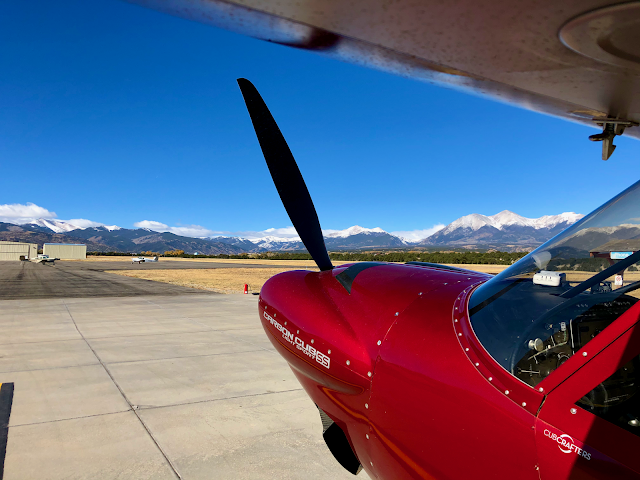Oh boy oh boy, it's time to start the wings proper! The main spars already have a lot of work done on them from the factory. The doublers have already been attached to the main spar channel using the larger 3/16" rivets that would be difficult for homebuilders to set without a heavy duty squeezer or rivet gun, and the whole thing has been gold anodized for corrosion protection. That said, the spars still have a decent amount of prep work before they're ready to have more parts attached to them.
The fuel tanks will be attached to the wings with screws rather than rivets, so nutplates need to be added to the spars to provide attachment points. Adding these nutplates is a process that really embodies the sheer tedium involved in building an airplane. For the total of 120 fuel tank nutplates on the spars, one has to go down the line of 90 holes on each side of each spar (three holes per nutplate) six times performing a different operation each time.
The process is as follows:
1) Ream all the #40 holes that will attach the nutplates to the spar since the countersink bit won't fit unless these holes are opened to final size. I followed the example set by other builders and put tape over all the gaps on the top side of the spars to keep metal shavings from getting caught between the pieces and causing problems.
2) Countersink the #40 holes to allow the AN426 rivets to sit flush. This was easily accomplished with the Sioux air drill on loan from my good buddy Chip at the airport. The holes didn't need to be too deep since I just need the rivets to sit flush with the spar (there won't be any skins sitting in these holes), but I still needed to make sure to allow some room for a thin layer of primer in each hole.
3) Mix up some primer and spot prime the countersunk holes with a Q-tip to protect against corrosion since the anodization has been removed. I had a tiny syringe left over from my cat's flea and tick treatment that worked perfectly for measuring out small amounts of base and curing solution.
 |
| Initially I only primed the holes for two nutplates to test whether I had set the countersink bit deep enough for the rivets to still sit flush. They ended up being good enough for these two nutplates, but I set the cage to cut couple clicks deeper just to be safe. |
4) Once the primer is cured (I only waited an hour or two - it was a
really thin layer), rivet the nutplates to the spar. The six inboard nutplates are angled to accommodate the additional wing walk ribs. The aftmost rivets on these are easy to squeeze, but the forwardmost rivets are too close to the spar for the squeezer and have to be bucked instead. The rest of the nutplates are parallel with the spar and can be set easily with the squeezer.
5) Countersink the screw holes with a #30 countersink bit. This is done
after installing the nutplates to allow the bit to center in the nutplate. These holes will need to be deep enough for the tank skins to sit flush with the spar, so I made a little gauge to check the depth. A lot more material is removed while countersinking these, so these took a lot longer than the last ones.
6) Spot prime the freshly-countersunk screw holes and allow them to cure. I also spot primed some small scratches I had made in the spar while countersinking everything else.
Once the primer is cured, repeat for each side of each spar. For each side, the whole process took roughly 4 to 5 hours.
In addition to the fuel tank attach nutplates are nutplates that will secure inspection panels on the bottoms of the wings. These are slightly smaller K1000-06 nutplates (#6 screws) instead of K1100-08 nutplates (#8 screws), but installation is pretty much identical.
Over the course of a few days I managed to get all of the fuel tank and inspection panel nutplates installed on both spars, and all of the fuel tank attach holes for the right spar are countersunk and primed. I began noticing it was taking an awfully long time to countersink the holes for the left spar, meaning the countersink bits are probably pretty dull by now. I went ahead and ordered new #30 and #40 bits and I'll continue work on the spars once I get them.
 |
| Dassa lotta nutplates. |






















































